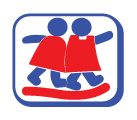How to Teach Your Children About Perspective and Social Sensitivity
You have likely stood in line at the check stand and watched an infant look at the people around him or her. And maybe you’ve seen when that baby spots something unfamiliar, like a man with a bushy and long beard, or a woman with bold makeup. Most infants cry in that situation because they don’t know how to channel their confusion, so they feel fear instead.
Young children react similarly when they come across something unfamiliar, like an accent, a different skin color, or different cultural norms. First they feel confused, and then they channel that confusion in a number of ways. Ideally, they would feel curious and ask questions. But sometimes kids feel threatened instead, so they express fear or react rudely to defend themselves.
To teach your little ones to respond positively and compassionately to the different people around them, have a look at the tips below. These tips will help your children grow into understanding and tolerant world citizens.
1. Regularly Introduce Your Kids to Unfamiliar Human Situations
If the unfamiliar becomes familiar, your children won’t have an adverse reaction to that situation anymore. So find out where clusters of other cultures live in your area, and take your kids to explore those places. Point out everything that looks beautiful and smells delicious. Express how cool you think the foreign language sounds.
Your children take pointers from you, so if they see that you have a positive experience around these different backgrounds, they’ll associate the differences with happy feelings. When they see people who belong to these cultures in the future, they’ll react with excitement and curiosity rather than aggression or fear. They will more freely make friends with people from different backgrounds as well.
2. Celebrate Different Cultures Once a Month
If you don’t have access to many different cultures, you can celebrate them once (or a few times) a month with special ethnic meals, a couple trinkets, and some picture books. You can check these books out from the library or purchase them for your collection, but they should give your children a solid overview of what to expect from different peoples all over the world.
3. Read Stories on a Daily Basis
Stories give kids the unique opportunity to empathize in a safe setting. They hear about the human or animal characters in their favorite stories, and they gain perspective about how people feel when good or bad things happen to them. The stories will increase your children’s understanding of how their words and actions will affect their peers.
Additionally, as you read, explain that all people feel similarly bad or good when certain things happen to them, so your children should behave carefully and avoid causing negative feelings.
4. Take Turns Practicing Listening Techniques
The ability to listen intently gives kids the best way to learn perspective and social sensitivity. When your children want to tell you something, give them your undivided attention. And when you need to speak to them, make sure they sit down and quietly listen as well. This listening technique should become a habit, and that practice will help your little ones gain additional perspective as they grow.
5. Talk to Your Kids About Social Mapping
The term “social mapping” refers to cause and effect. Children need to understand that their behaviors affect others. You can teach them this concept by acting out different scenarios. For example, if your children attend daycare, and one of your kids decides to snatch a toy from a friend, that friend will feel sad. Then that friend will not want to spend time with your kids anymore, and your children will feel sad.
As children recognize potential consequences to their actions, they’ll become more sensitive to the needs of others around them.
6. Explain Different Facial Expressions to Your Children
Your kids already know how to interpret basic expressions like smiles and frowns, laughter and tears. However, as you know, people can make hundreds of complicated expressions. Look up a chart online and take your children to the mirror. Make the different faces for them, and explain the emotions that accompany those expressions. Then, your children will know how to better react to their friends’ emotions.
7. Outline Terms that Children Should Not Use in Reference to Other Cultures
When your little ones learn new words, they often feel excited, especially if those words come with a short of forbidden taboo. So, as your children learn curse or derogatory references, explain what the words actually mean, and outline how those words make other people feel. Tell your children about other people’s potentially angry reactions as well.
Children want to impress their parents and make friends. If they understand that the steps above will help them do that, you shouldn’t have any trouble teaching them about perspective. For more tips on teaching your children essential life skills, browse the rest of our blog.


